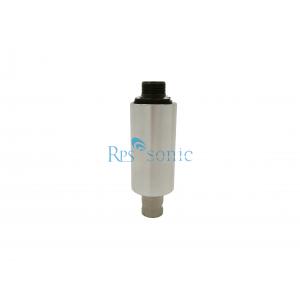

Add to Cart
Parameter
Introduction
Working principle of ultrasonic vibrating screen
Ultrasonic sieving and cleaning system can be combined with various
types of circular vibrating sieving machines, so that the sieve is
superimposed with high-frequency ultrasonic vibration while
receiving low-frequency vibration, so that large particles on the
sieve become suspended, thus avoiding clogging the mesh.
Ultrasonic vibrating screen has been successfully applied to
silicon carbide (325-500 mesh), electromagnetic powder, anode
material, laser powder, carbon powder, powder coating, alloy
powder, molybdenum powder, stainless steel powder, tungsten powder,
cobalt powder, nickel powder, quartz Screening of flour, malt
flour, spore flour, etc.
Ultrasonic vibration sieving solves the problem of sieving
materials with strong adsorption, easy agglomeration, static
electricity, and light specific gravity. The particle size
classification of dry powder can reach 25µm or liquid filtration
can reach 10µm.
Features
Why RPS-SONIC TRANSDUCER:
1. Every transducer with a only tracking number, you can check the parameter from our saler no matter how long it passed.
2. All transducer with one year warranty.
3. Specialized in ultrasound for more than ten years
4. Every transducer with 24hours old testing before shipment.
5. Good packing, no packing problem during the 10 years exporting business.
6. Every customer will get purchase records and there are certain rewards after accumulation
Service and shipment
Advantages
This ultrasonic sieving technology offers enormous advantages by
the sieving, charging and feeding bulk materials and powders.
This technology requires no tuning of mechanical components on the frequency of the ultrasonic generator. This results in a high flexibility for the user and lower cost for the refurbishing of a sieving screen. The ultrasonic components could be connected to almost every sieving screen in operation. For new sieving designs there’s a simple coupling needed for the transfer of ultrasonic energy. By cleaning the screen continuously during the process a significant higher flow rate will be reached.
Applications for this sieve technique could be found in the painting-, coating-, chemical-, food and pharmaceutical industries. Some examples are the sieving of colour pigments, coatings, toner powder, sugar, flour and spices. But also powders for metallurgical or ceramic processes.
